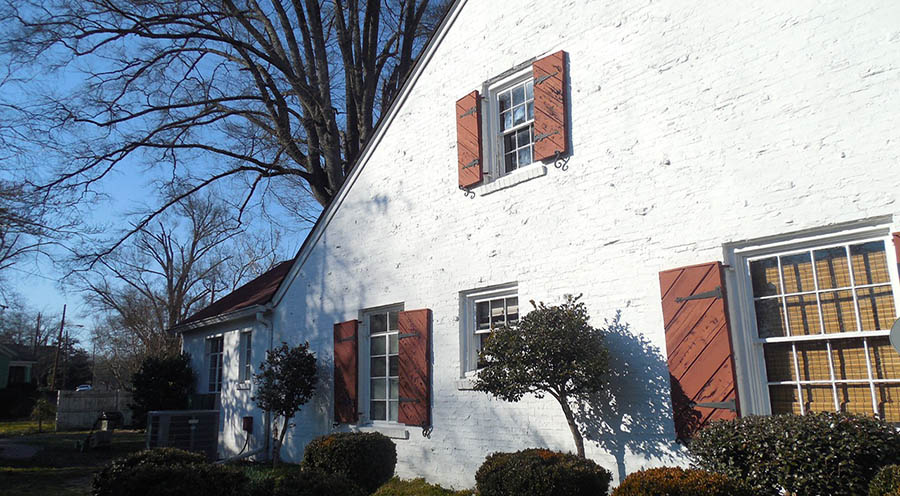As a homeowner, it can be frustrating to find mold and mildew spots appearing on the exterior surfaces of your home. Often mistaken as dirt, it is soon realized that no amount of scrubbing or cleaning is making these spots – black or green, gray or brown – disappear.
What exactly are they and where did they come from? Well, what you’re seeing is likely mildew or mold. And if you’re planning to paint your exterior, you want to make sure the surface is clean and free of these issues before you begin.As a homeowner, it can be frustrating to find mold and mildew spots appearing on the exterior surfaces of your home. Often mistaken as dirt, it is soon realized that no amount of scrubbing or cleaning is making these spots – black or green, gray or brown – disappear.
What exactly are they and where did they come from? Well, what you’re seeing is likely mildew or mold. And if you’re planning to paint your exterior, you want to make sure the surface is clean and free of these issues before you begin.
Identifying Mold and Mildew Spots
But first, a little bit of information about what you’re seeing and how you can get rid of the mold and mildew spots.
Mildew looks powdery or downy in appearance and starts out white or yellow. It grows in flat patterns and may later turn green or brown. Mold, on the other hand, has more of a fuzzy appearance and can be many different colors, including blue, green, yellow, brown, gray, black, or white.
How to Get Rid of Mold and Mildew Spots
Mildew forms naturally on surfaces that are damp a lot of the time, or on surfaces that receive little or no direct sunlight, so thus you will likely see mildew on an area of your exterior that is north-facing, as it is shady and damp most of the time.
It may seem wise to paint over these spots, as it will initially hide it, but they’ll quickly reappear and continue to keep doing so, eventually ruining the beauty of your new paint job. Thankfully, if the mildew or mold issue is identified and controlled early, you may not have to paint your exterior.
Restore the Natural Beauty
Here are some ways that thoroughly cleaning the surface may effectively remove mildew (and mold) to restore the beauty of your home.
- First of all, if your exterior is stucco, you can test for mildew by applying a few drops of household bleach to the area. If spots disappear, the discoloration is probably mold or mildew. If they do not disappear, it is probably dirt.
- Next, to properly remove the mildew, you want to scrub the area with a solution that is one part bleach to three parts water. Allow the solution to sit on the surface for 10 minutes before scrubbing to ensure all spores are killed.
Although mold and mildew can be a common cause of house paint discoloration, many exterior paints on the market are now made with a preventative ingredient, containing “mildewcide”, to help control the outbreaks. Further, if painting your exterior, consider using an acrylic latex paint instead of oil based paint as it resists mildew better.
The gloss or sheen of the paint also should be considered, as higher gloss paints are less porous, resulting in a diminished ability for mold spores to grab on to the exterior. And because darker colors dry faster than lighter colors, darker shades used for exteriors are less receptive to mildew.
With these facts in mind, you’ll be more equipped to spot mildew before it becomes a major problem – and the earlier you spot it, the easier it will be to remove.



